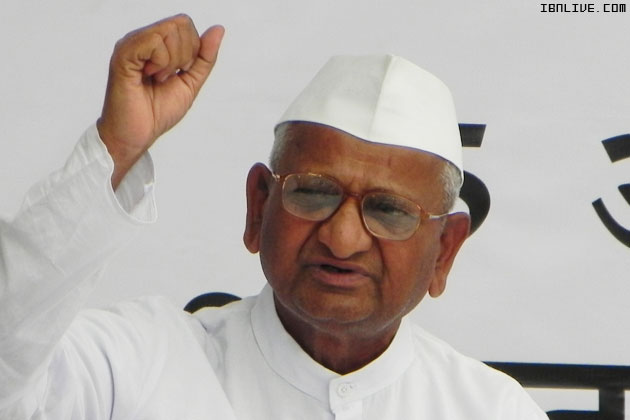
New Delhi, August 3: Team Anna today said its political alternative will not compromise on corruption, holding their fight is for changing the system and not power.
"Anna is a hero of people. How long he can remain deaf to the voice of people? He has taken a decision to challenge the political class," a statement posted on the India Against Corruption website said.
"Now Team Anna is ready to enter the battlefield of politics. Now Team Anna is ready to enter the battleground to take on government. Anna has said that he will not dilute his beliefs. The political alternative that will come up will not compromise on corruption. This fight is not for changing power but changing system," it said.
It said political parties continue to say that Anna and his supporters will not be able to win elections and to counter such claims, it is necessary to talk about political alternative. "Team Anna has sounded the bugle to enter the political battlefield and take on political parties. Now people have to take a decision whether the corrupt system will continue to exploit you or support a right alternative," it said.
However, a word of caution came from Medha Patkar, a member of Team Anna's Core Committee who made a single appearance at the Jantar Mantar protest this time. "One has to ensure that people who are awakened remained so and one has to think a 100 times before taking a plunge into electoral politics. If he joins politics, then the momentum gained should not be lost. When people with noble intentions join politics, either they don't last long or they don't achieve much," she said.
Team Anna member Kiran Bedi defended the move, saying Hazare's call is that he will help identify good and ethical people so that they could make it to politics.
Lawyer Prashant Bhushan said they were taking this step reluctantly but people have been telling them why don't they work for providing a political alternative.
Activist Manish Sisodia, whose fast entered tenth day, said, the ball is now in people's court on how this fight can be taken to Parliament.
"It will happen by forming a party or with the help of individuals or some other way will emerge. People are sending their suggestions. The bottomline is that this mission needs to be taken to Parliament from streets," Sisodia said.





Comments
Add new comment